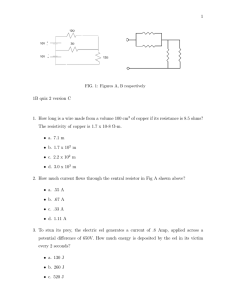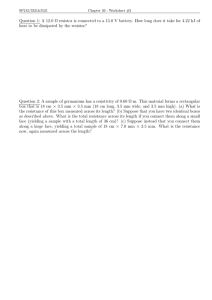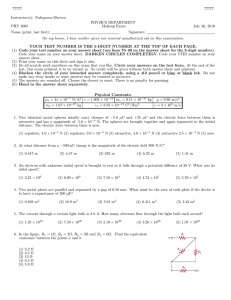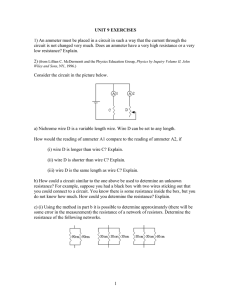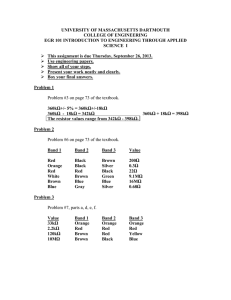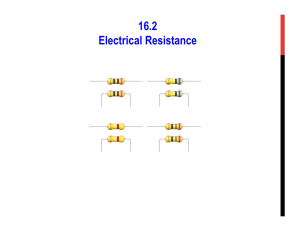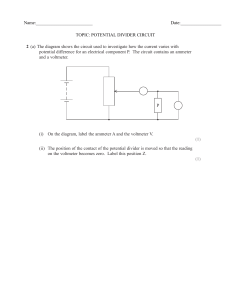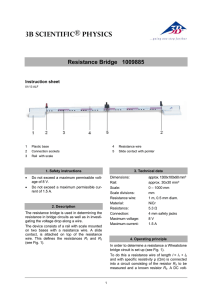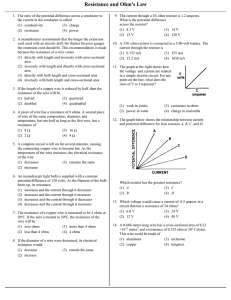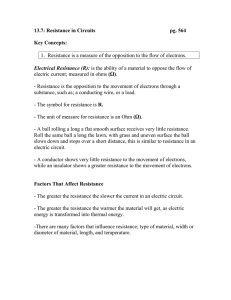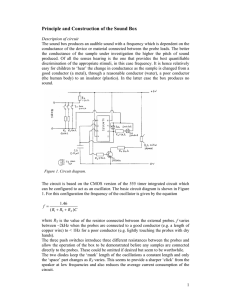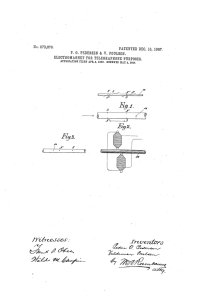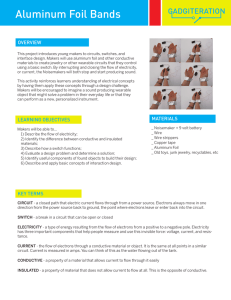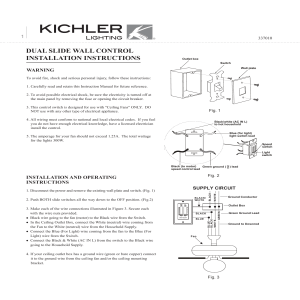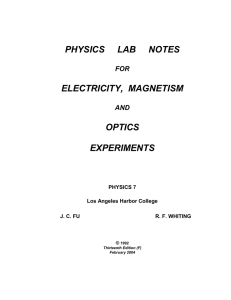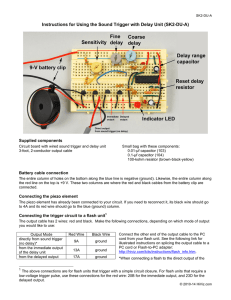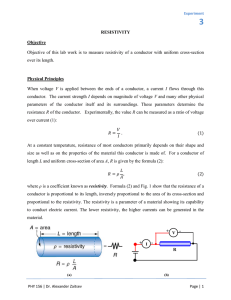Document 10986458
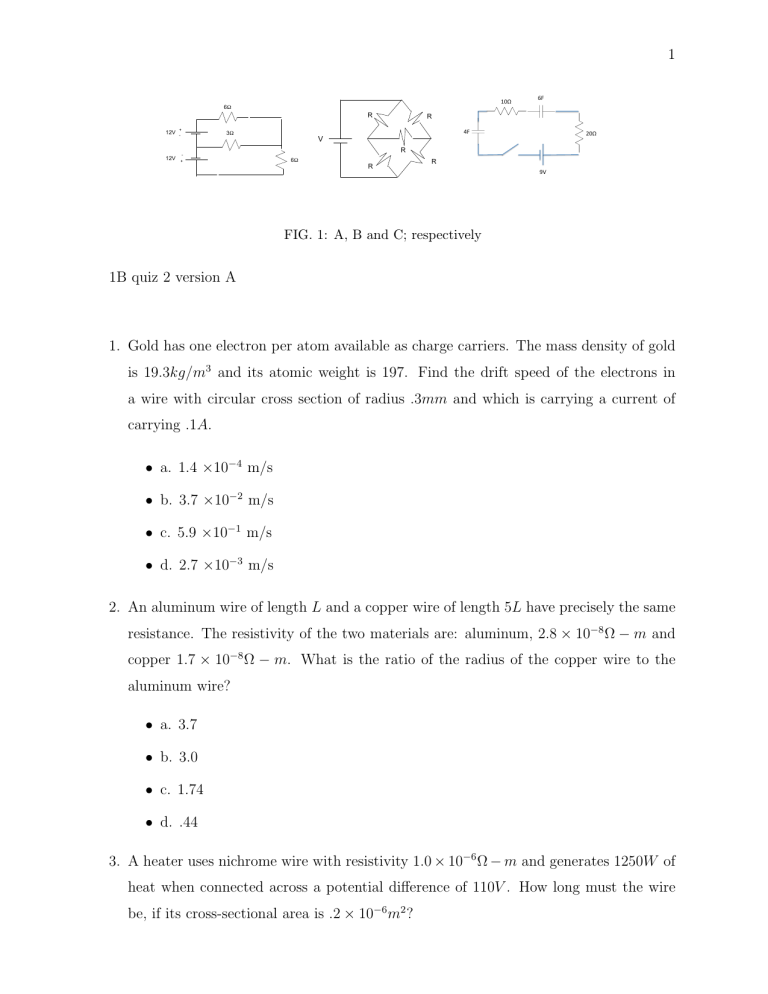
1
12V
+
-
12V
-
+
6 Ω
3
Ω
6 Ω
V
R
R
R
R
R
4F
10Ω
6F
9V
20Ω
FIG. 1: A, B and C; respectively
1B quiz 2 version A
1. Gold has one electron per atom available as charge carriers. The mass density of gold is 19 .
3 kg/m
3 and its atomic weight is 197. Find the drift speed of the electrons in a wire with circular cross section of radius .
3 mm and which is carrying a current of carrying .
1 A .
• a. 1.4
× 10
− 4 m/s
• b. 3.7
× 10
− 2 m/s
• c. 5.9
× 10
− 1 m/s
• d. 2.7
× 10
− 3 m/s
2. An aluminum wire of length L and a copper wire of length 5 L have precisely the same resistance. The resistivity of the two materials are: aluminum, 2 .
8 × 10
− 8 Ω − m and copper 1 .
7 × 10
− 8 Ω − m . What is the ratio of the radius of the copper wire to the aluminum wire?
• a. 3.7
• b. 3.0
• c. 1.74
• d. .44
3. A heater uses nichrome wire with resistivity 1 .
0 × 10
− 6 Ω − m and generates 1250 W of heat when connected across a potential difference of 110 V . How long must the wire be, if its cross-sectional area is .
2 × 10
− 6 m
2
?
2
• a. .025m
• b. .37m
• c. 1.94m
• d. 23.5m
4. A resistor with R = 5 × 10 6 Ω and a capacitor with C = 120 µF are connected in series to a 800 V power supply. Find the current when the capacitor is charged to 90% of its final charge.
• a. 3 µ A
• b. 16 µ A
• c. 30 µ A
• d. 160 µ A
5. One month’s electric bill for an apartment is $25.33 and the cost of electricity is
$.08/kilowatt-hour. All appliances run at 120 V . How many electrons passed through the house that month?
• a. 1.8
× 10 20
• b. 7.4
× 10 21
• c. 9.5
× 10 23
• d. 5.9
× 10 25
6. Find the current in the middle resistor in the circuit shown in Fig A
• a. 1.0 A
• b. 1.33 A
• c. 2.0 A
• d. 4.0 A
7. Find the total current out of the battery in the circuit shown in Fig B (hint: you do not need to write down all the Kirchoff law equations; think about symmetry and the role of the middle resistor?)
3
• a.
V
5 R
• b.
V
2 R
• c.
V
R
• d.
2 V
R
8. Consider the circuit in Fig C with two resistors and two capacitors connected in series with a 9 V battery. Calculate the potential between the upper-left and upper-right corner points both immediately after the switch is closed and after waiting a time long compared to the circuit’s time constants.
• a. 3V; 3.6V
• b. 3V; 5.4V
• c. 6V; 5.4V
• d. 6V; 0V
